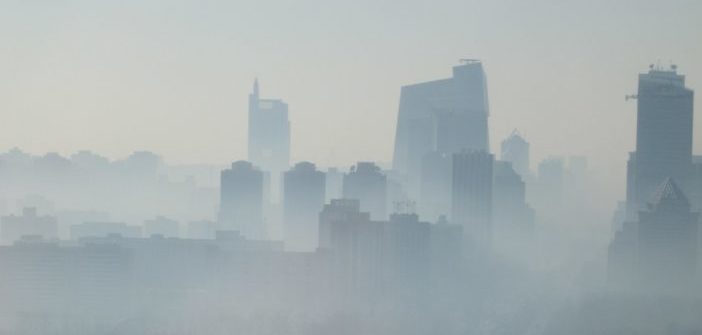There’s no denying that we’ve been treated to glorious and clear blue skies in the past few weeks, and perhaps this visible change in the air quality was a reminder for the powers that be that “blue” shouldn’t be associated with pollution.
The Beijing Municipal Environmental Protection Bureau has proposed several modifications in the city’s pollution warning system, removing the lowest “blue” alert and replacing it with just a “health reminder”, according to Xinhua. Well, just in time when the smog’s back to usher in another pollution season this year.
Under the revised plan, if we choke on a cocktail of air pollutants that are beyond an air quality index (AQI) of 200 but only lasts for a day, we’ll get a “reminder” that includes “health protection information” along with an air quality forecast. As to what kind of information they will give us (“Wear your masks”, maybe) isn’t clear as of yet.
Previously, a blue alert, the lowest of the four-tier air pollution warning system adopted in 2016, is raised when AQI levels reach between 200 and 300 PM 2.5 for 24 hours, which, in the past, has triggered emergency responses ranging from banning construction operations to restricting production in heavy smoke-belching industries.
LOOK: Beijing’s Improvement in Air Quality as Shown in 1,800 Photographs
What about the other alerts, you might ask? The proposal revises the standards in the other color levels: red (heavy), orange (moderate), and yellow (light), with the middle alert being activated when the city is shrouded in a smog that’s forecast to average over AQI 200, with at least a day above AQI 300, for 72 hours or beyond. Once any of those alerts are on, authorities will activate a series of emergency responses, from restricting vehicles to suspending production in smokestack industries.
Furthermore, the proposal further details how different enterprises should implement pollution control responses, in a bid to avoid a “one-size-fits-all” response that would have an adverse effect on different industries.
Environmental protection experts interviewed by Xinhua said the overhaul of the pollution warning system would simplify control measures and cut costs since a blue alert was short-lived, and that moderate pollution would have dissipated once it was put into effect. They added that people should be more concerned about long-term actions.
In the first nine months of 2018, Beijing experienced an average PM 2.5 density at 53 micrograms per cubic meter (μg/m3), down 13.1 percent from last year but still above the World Health Organization’s guideline annual average value at 10 μg/m3.
While the government is working on improving air quality across China, we have to deal with the fact that air pollution will linger on for the time being. Staying indoors with air filters, using masks, and limiting outdoor activities are still the top ways to protect yourself during bad air days. And of course, don’t let pollution stop your family from being active: you can set up creative and fun policies for your kids, or make DIY pollution crafts or pollution stoppers for door drafts.
Photo: Beijing Smog, Sohu News

